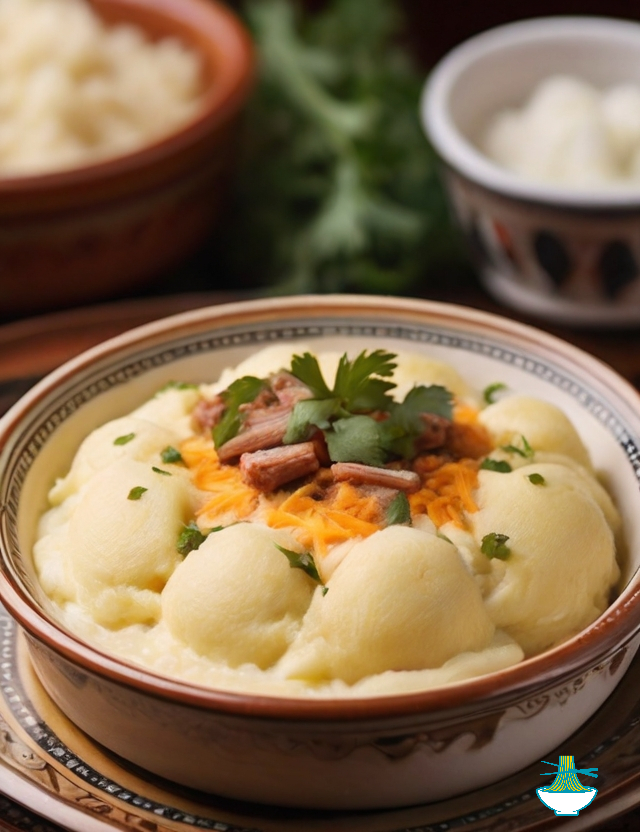Nestled in the heart of South America, Bolivia is a country rich in cultural diversity and culinary heritage. One dish that stands out as a true testament to Bolivian gastronomy is the Pacú, a delectable fish native to the Amazon River basin. The Bolivian Pacú recipe we are about to explore not only showcases the country's culinary prowess but also pays homage to the vibrant tapestry of flavors that define Bolivian cuisine.

In this culinary journey, we'll delve into the art of preparing Bolivia's famed Pacú, combining indigenous ingredients and traditional cooking methods to create a dish that captures the essence of Bolivian culture. From the pristine waters of the Amazon to your kitchen, let's embark on a culinary adventure that promises to tantalize your taste buds and transport you to the heart of Bolivia's culinary heritage.
Ingredients:
- 1 whole Pacú fish (cleaned and scaled)
- 4 cloves garlic (minced)
- 1 teaspoon ground cumin
- 1 teaspoon smoked paprika
- 1 teaspoon dried oregano
- Salt and pepper to taste
- 1/4 cup vegetable oil
- 2 lemons (sliced)
- Fresh parsley (chopped, for garnish)
Instructions:
Prepare the Pacú:
1-Rinse the Pacú thoroughly under cold water and pat it dry with paper towels.
2-Make diagonal cuts on both sides of the fish to allow the marinade to penetrate.
Create the Marinade:
1-In a bowl, combine minced garlic, ground cumin, smoked paprika, dried oregano, salt, and pepper.
2-Gradually add vegetable oil to form a paste. Adjust seasoning according to your taste.
Marinate the Pacú:
1-Rub the marinade generously over the Pacú, making sure to get it into the cuts on both sides.
2-Allow the fish to marinate for at least 30 minutes. For a richer flavor, you can refrigerate it for up to 2 hours.
Prepare the Grill:
1-Preheat the grill to medium-high heat.
2-Oil the grill grates to prevent sticking.
Grill the Pacú:
1-Place the marinated Pacú on the preheated grill, and cook for about 15-20 minutes per side, depending on the thickness of the fish.
2-Grill until the flesh is opaque and easily flakes with a fork. Baste with additional marinade during cooking for added flavor.
Serve:
1-Carefully transfer the grilled Pacú to a serving platter.
2-Garnish with sliced lemons and freshly chopped parsley for a burst of freshness.
Enjoy:Serve the Bolivian Grilled Pacú hot, alongside your favorite sides like rice, grilled vegetables, or a fresh salad.
This Bolivian Pacú recipe captures the essence of traditional Bolivian flavors, providing a delightful and aromatic dish that celebrates the natural taste of this unique fish. Enjoy this culinary journey into the heart of Bolivia's vibrant gastronomy!
Nutritional Values
It's challenging to provide exact nutritional values without specific quantities and sizes for each ingredient, but I can offer approximate values for some common amounts. Keep in mind that these values may vary based on the size and brand of the ingredients used.
Nutritional Values (Approximate):
Pacú Fish (200g, raw):
- Calories: 250
- Protein: 50g
- Total Fat: 5g
- Omega-3 Fatty Acids: 1.5g
- Cholesterol: 80mg
- Sodium: 70mg
Benefits: Rich in protein, omega-3 fatty acids, and essential nutrients. Supports heart health, provides amino acids for muscle growth, and contributes to overall well-being.
Garlic (4 cloves):
- Calories: 16
- Protein: 1g
- Total Fat: 0g
- Carbohydrates: 4g
- Fiber: 0.2g
Benefits: Contains allicin, which has antimicrobial and antioxidant properties. Supports immune health, helps regulate blood pressure, and may have anti-inflammatory effects.
Ground Cumin (1 teaspoon):
- Calories: 8
- Protein: 0.4g
- Total Fat: 0.5g
- Carbohydrates: 1.4g
- Fiber: 0.1g
Benefits: A good source of antioxidants and iron. Cumin may aid digestion, boost the immune system, and provide anti-inflammatory benefits.
Smoked Paprika (1 teaspoon):
- Calories: 6
- Protein: 0.3g
- Total Fat: 0.3g
- Carbohydrates: 1.2g
- Fiber: 0.6g
Benefits: Packed with antioxidants and vitamin A. May have anti-inflammatory properties, contribute to eye health, and add flavor without additional calories.
Dried Oregano (1 teaspoon):
- Calories: 5
- Protein: 0.2g
- Total Fat: 0.2g
- Carbohydrates: 1g
- Fiber: 0.4g
Benefits: Rich in antioxidants, vitamins, and minerals. Oregano may have antimicrobial properties, support digestion, and provide anti-inflammatory benefits.
Vegetable Oil (1/4 cup):
- Calories: 480
- Total Fat: 56g
- Saturated Fat: 4.5g
- Monounsaturated Fat: 35g
- Polyunsaturated Fat: 14g
Benefits: Contains healthy fats, such as monounsaturated and polyunsaturated fats. Provides essential fatty acids, supports heart health, and helps absorb fat-soluble vitamins.
Lemons (2, medium-sized):
- Calories: 32
- Total Fat: 0.3g
- Sodium: 2mg
- Potassium: 254mg
- Carbohydrates: 10g
- Fiber: 2g
- Sugars: 2g
- Vitamin C: 50mg
Benefits: High in vitamin C, antioxidants, and potassium. Supports immune health, aids digestion, may promote heart health, and adds a refreshing flavor.
Fresh Parsley (1 tablespoon, chopped):
- Calories: 1
- Protein: 0.1g
- Total Fat: 0g
- Carbohydrates: 0.1g
- Fiber: 0.1g
Benefits: Rich in vitamins A, C, and K. Parsley may have anti-inflammatory and antioxidant properties, support bone health, and contribute to a well-rounded diet.
These values are meant to give you a general idea and can vary based on the specific brands and sizes of the ingredients used in your recipe. If you have specific quantities for each ingredient, you can use a nutrition calculator or consult food packaging for more accurate information.


Comments